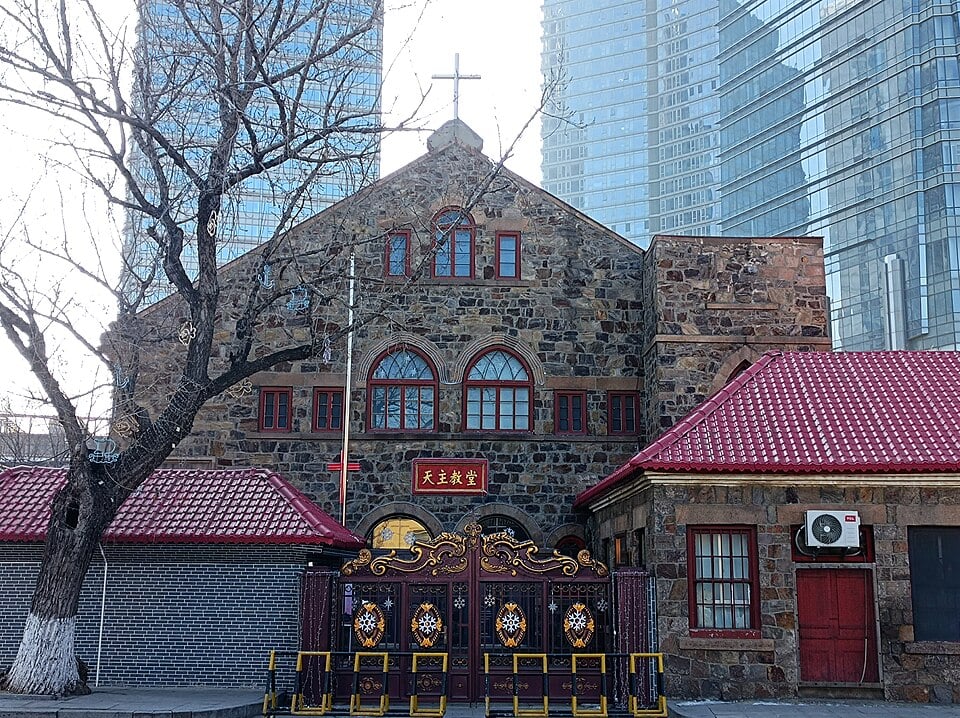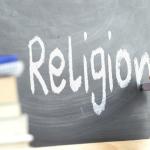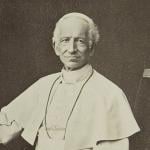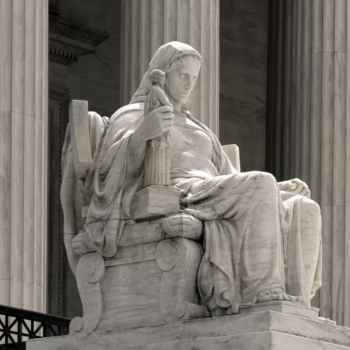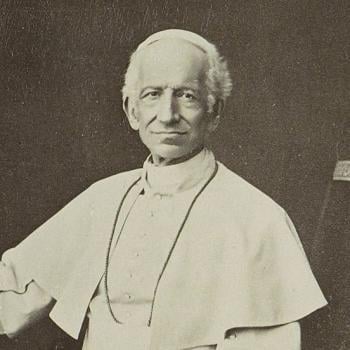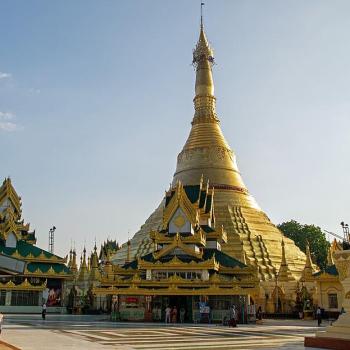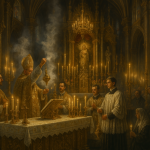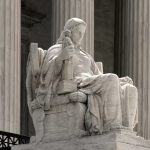Catholicism in China poses a formidable problem for the Vatican. The late Pope Francis is warmly remembered for his deep, sincere faith and compassion. But the Holy Father has also been accused of abandoning the Catholic Church in China. This criticism is about an agreement made between Pope Francis and the People’s Republic of China regarding the ordination of Chinese bishops. After looking into the matter, I found myself somewhat more sympathetic to Pope Francis’s position than most of his critics. I’ve been following news about China’s policies toward Tibetan Buddhism for quite a while, so I’m familiar with how Beijing deals with religion. But Catholicism in China is a complicated issue with no clear resolution. I’ll start with what we might call an executive summary of the Chinese Catholic controversy, to be followed by some historical background.
The Chinese Bishop Problem
Today, the People’s Republic of China (PRC) does permit the practice of religion, but only under government control. Since the 1950s, five religions have been recognized by the PRC — Buddhism, Islam, Protestantism, Daoism, and Catholicism. Each of these is governed by a “patriotic association,” and these associations are overseen by a bureau of the Chinese Communist Party’s Central Committee. This bureau is the State Administration for Religious Affairs, and its primary mission is to be certain that religious institutions support the policies of the Chinese Communist Party (CCP). As part of this mission, the religious affairs bureau monitors clergy to be sure that they are loyal to the CCP. Further, high-level clergy — Catholic bishops, for example — are supposed to be appointed only by the CCP, not by religious institutions. Or, in the case of Catholic bishops, by the Pope. In other words, the government-approved Catholic Church in China is not supposed to be headed by the Vatican but operated entirely by the CCP. At the same time, an underground Catholic Church that considers itself headed by the Vatican has survived in China.
As time went on, it came to Rome’s attention that there was a critical shortage of clergy in China’s underground church. In 1978 Pope Paul VI granted dispensations to the canonical rules for the underground Chinese Catholic Church. These dispensations allowed candidates to the priesthood to be ordained without formal seminary training, which of course wasn’t available in China. In 1981, Pope John Paul II authorized nine Chinese bishops to ordain new bishops for the Chinese Catholic Church. Five of these bishops were from the underground church. Four served in the Chinese Catholic Patriotic Association, but the four “government” bishops had been ordained by the Church, not the Party, decades earlier. Pope Benedict XVI further encouraged unity between the underground and CCPA churches. In time a number of the Chinese Catholic Patriotic Association bishops were recognized by the Vatican as legitimate. For a good background on this, see a 2024 article in the Union of Catholic Asian News, “The Holy See, Beijing, and the future of Sino-Vatican relations” by Jonathan Y. Tan.
In 2018, Pope Francis and the CCP agreed to a compromise regarding the appointment of bishops. The details of this compromise have never been made public, but it has been widely reported that the compromise allows Chinese authorities to nominate bishops for the government-approved churches. Then the Vatican would have final approval of the nominees. At the same time, the Vatican may not appoint a bishop in China that the CCP does not support.
The problem, according to the critics, is that this agreement comes at the expense of the underground Catholic church. To better understand the views of the critics, please see Francis X. Rocca, “The Vatican’s Gamble With Beijing Is Costing China’s Catholics” at The Atlantic, May 14, 2024. Rocca, a journalist with extensive experience covering the Vatican, writes that Pope Francis compromised the Catholic faith in China. “He accommodates Beijing in order to stabilize the Church in China, but Chinese authorities aren’t interested in the faith that Francis professes,” Rocca wrote. “They’ve made clear that they want a Church that submits to the state; such a Church might be stable, but would it be Catholic?”
The Shifting Religious-Political Landscape of China
Let’s now step back and take a broader view. Many westerners are confused about religion in today’s China. For example, it’s widely believed in the West that the Bible is banned in China. I still occasionally read a news story about someone getting caught trying to smuggle Bibles into the People’s Republic. But Bibles haven’t been banned in China for decades, and in fact one of the largest Bible publishers in the world is located in Shanghai. However, the government controls distribution of these Bibles in China, and I understand they are available only through the “patriotic association” churches.
Mao Zedong took control of China, and inaugurated the People’s Republic of China, in 1949. It was under Mao that the patriotic associations and their controlling Communist Party bureaucracy were formed. Mao was famously antagonistic toward religion, and all religion quickly became a target. Christianity, which in much of Asia is still associated with European colonialism, was denounced as “foreign cultural imperialism.” Foreign missionaries were deported. Churches were forced to cut ties with outside authorities, such as the Vatican, During the Cultural Revolution (1966-1976), mobs of Red Guards attacked all religious structures — shrines, churches, mosques, temples. Even ancient and historic Chinese temples, such as the 15-century-old Shaolin Temple, were sacked, and monks and priests were flogged and paraded through the streets to be publicly shamed.
The madness ended with Mao’s death in 1976. After Mao, the CCP began to moderate its position toward religion. In 1982, the Central Committee of the CCP issued a manifesto that proclaimed the Chinese had “freedom of religion.” However, this freedom only applied to “normal religious activities,” which were not defined, and the government banned religious education for children. It also banned Party members from accepting religious teachings. Even so, through most of the 1980s religions in China were relatively free, many sources say, although Tibetan Buddhists might disagree. The government was more focused on rebuilding China’s economy than on what was going on in churches. Thus, Pope John Paul II had a relatively free hand to ordain nine Catholic bishops.
The CCP Tightens Its Grip on Religion
The pro-democracy Tiananmen Square protests of 1989 brought about increased restrictions on all aspects of life in the People’s Republic. Chinese authorities cracked down on unauthorized religion, including the underground Catholic Church. In 1995, the CCP began singling out and banning many unofficial religious groups, most of them Christian, as “evil cults.” It was also in 1995 that the child identified as the 11th tulku, or rebirth, of the Panchen Lama of Tibetan Buddhism was seized by Chinese authorities — with his entire family — and was never seen again. The CCP chose another boy, the son of a high-level Communist Party member, to serve in the role, as he does to this day. I
In 2007, the State Administration for Religious Affairs released Order No. 5, which covers “the management measures for the reincarnation of living Buddhas in Tibetan Buddhism.” The order provides “application and approval procedures” for the proper rebirth of “living Buddhas,” which is what the Chinese call Tibetan lamas. Applicants for rebirth must apply to various parts of the bureaucracy of the People’s Republic of China to be approved and recognized. Digest that one for a moment. And Beijing has already claimed the authority to choose the next Dalai Lama. I mention this to point to what the CCP is capable of doing, to any religion.
Many sources say that President Hu Jintao, who served from 2003 to 2013, took a somewhat more lenient attitude toward religion. He believed religion could contribute to a harmonious society. However, there also were reports of government raids on “house churches” during Hu’s tenure. House churches are residences where Chinese Christians gather to worship outside the control of the State Administration for Religious Affairs. And as the BBC reported in 2008, there was a massive crackdown on Tibetan Buddhist monasteries during Hu’s tenure. Yet to this day Hu Jimtao is considered a relatively benign dictator where religion is concerned.
After Hu Jintao came Xi Jinping, the current president of the PRC. Xi Jinping is all about internal unity and discipline. In 2014 the CCP began an intense oppression of the Uyghurs, a Muslim people living in western China. (See also “Who Are the Uyghurs and Why Is China Being Accused of Genocide” from BBC News, May 2022.) In 2015 Xi announced his “Sinicization” policy for all religions in China. According to this helpful article from the Pew Research Center, Xi called for “all religious groups in China to adapt to socialism by integrating their doctrines, customs and morality with Chinese culture.” However, see also Fenggang Yang in Christianity Today, “Xi Jinping Is Not Trying to Make Christianity More Chinese” (January 16, 2024). Fengang Yang writes that Xi’s real goal is not cultural assimilation but the complete submission of all religion to “the Chinese Communist party-state.” Xi has been even tougher on the house churches and other religious groups not recognized by the CCP than was Hu Jintao. Last year the Catholic News Agency reported that “Chinese officials have ordered the removal of crosses from churches and have replaced images of Christ and the Virgin Mary with images of President Xi Jinping.”
Pope Francis Confronts the China Problem
Cardinal Jorge Mario Bergoglio of Argentina became Pope Francis in 2013, the same year Xi Jinping became president of China. And this takes us to the 2018 agreement between the Vatican and the Chinese Communist Party. Was this agreement the disaster some critics say it is? Note that some of the news reporting about this deal has been awful. For example, this story claims that Pope Francis “ceded to the Chinese Communist Party control over appointing bishops.” No, the Chinese Communist Party had been appointing bishops without the Vatican’s input for many years. What Pope Francis negotiated gave the Vatican some input. I can’t fault him for that.
Since the details of the agreement are not public, I am loathe to judge it. At the same time, the underground Catholic Church in China has managed to survive, through terrible peril, through all these years. They’re the ones who are literally on the front lines and understand the situation. In a May 2024 story in La Croix International the underground Catholics say they feel nearly as constricted under Xi as they did under Mao. And they don’t believe the 2018 agreement has helped them at all. The question is, would their oppression be any different had there been no agreement? There is no clear answer to that. It could be argued that Pope Francis shouldn’t have given the patriotic association church any legitimacy, but he was following in the footsteps of Pope John Paul II and Pope Benedict XVI in encouraging unity between the “patriotic” and the underground Catholic Church. As I said above, this is a complicated issue with no clear resolution.
Of course I cannot predict what the next Pope might do regarding China. One assumes that the spiritual guidance of the underground Catholics will be a priority. But recent history tells us that pushing Beijing too aggressively could make matters for the underground Church worse. The underground Catholics already are being watched. The authorities are capable of mass arrests and “re-education camps.” Great care must be taken.
